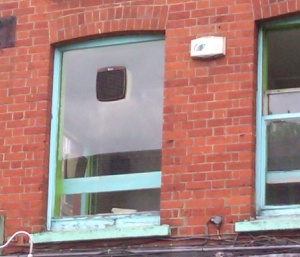Difference between revisions of "Colour scheme"
Jump to navigation
Jump to search
(m) |
(→Victorian: nm) |
||
| Line 12: | Line 12: | ||
===Victorian=== | ===Victorian=== | ||
| − | * Dark brown varnished woodwork | + | * Dark brown varnished interior woodwork |
| − | |||
* Generally white or garish colours for the interior - this was an era in which people played with colourwashes. For example paris green interior woodwork was once fashionable. Subtlety and what we might think of as more developed taste was not the style of the time. | * Generally white or garish colours for the interior - this was an era in which people played with colourwashes. For example paris green interior woodwork was once fashionable. Subtlety and what we might think of as more developed taste was not the style of the time. | ||
* Wallpaper popular for the lower part of the wall below the dado rail. | * Wallpaper popular for the lower part of the wall below the dado rail. | ||
| Line 24: | Line 23: | ||
* Lime based paints with a dead matt finish most popular | * Lime based paints with a dead matt finish most popular | ||
* Interiors generally used much less soft colour schemes than today. Coloured paint was far from universal, so perhaps the stronger colours provided a welcome change. | * Interiors generally used much less soft colour schemes than today. Coloured paint was far from universal, so perhaps the stronger colours provided a welcome change. | ||
| − | * | + | * Interior metalwork often black japanned or polished brass. |
| − | |||
==Colour pairs== | ==Colour pairs== | ||
Latest revision as of 00:10, 15 November 2014
Online Paint Scheme Tool
Paint schemes can be tried out at Online Paint Scheme Tool though its worth bearing in mind that the colour rendition will not generally be accurate. (Setting up your monitor correctly can at least improve it.)
Period colour schemes
Medieval
- White limed walls.
- Woodwork was not painted black, this is a more recent fashion.
- Black ironwork
Victorian
- Dark brown varnished interior woodwork
- Generally white or garish colours for the interior - this was an era in which people played with colourwashes. For example paris green interior woodwork was once fashionable. Subtlety and what we might think of as more developed taste was not the style of the time.
- Wallpaper popular for the lower part of the wall below the dado rail.
- Exterior woodwork usually black, brown, green or broken white, but not white.
- Colour washes applied to a white lime paint base was the most popular way of applying colour to walls.
- Floorboards sometimes painted black around the perimeter.
- Paris green was fashionable in the 1890s, and was used on woodwork as often as the plaster!
- 'Invisible green' was used for railings among plants. It made the ironwork not noticeable, hence the name.
- Functional rooms such as kitchen & pantry nearly always lime white. Occasionally very light blue was used to repel insects.
- Lime based paints with a dead matt finish most popular
- Interiors generally used much less soft colour schemes than today. Coloured paint was far from universal, so perhaps the stronger colours provided a welcome change.
- Interior metalwork often black japanned or polished brass.
Colour pairs
Some colour pairs work well together. Of course opinions vary as to how good they look in houses. Some examples:
- Peach & cream
- brown & cream
- mint green & chocolate brown
- blue & white
- mustard & mushroom (light beige)
- black & white
